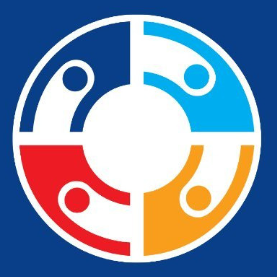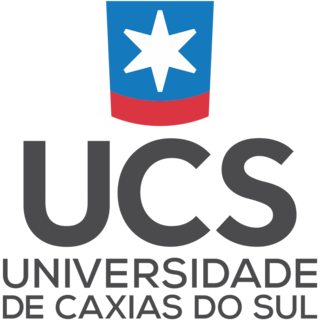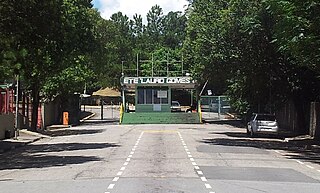
The Federal University of Minas Gerais is a federal research university located in the state of Minas Gerais. Its main and biggest campus is located in the city of Belo Horizonte, Brazil. It is one of Brazil's five largest and highest-ranked universities, being the largest federal university. It offers 79 undergraduate education programs, upon completion of their curricular schedule the student is awarded either a bachelor's degree, a licenciate degree, or a professional title, all officialized by the issue of a university diploma. It also has 90 postgraduate education programs, awarding 30 postbaccalaureate specialization degrees, 92 master's degrees, and 72 doctoral degrees, as well as 41 medical residency programs offered at UFMG's hospital facilities complexes.

The Federal University of Rio Grande do Sul is a Brazilian public federal research university based in Porto Alegre, Rio Grande do Sul. UFRGS is among the largest and highest-rated universities in Brazil, having one of the largest number of scientific publications. From 2012 to 2019, the university was elected as the best federal university of Brazil. UFRGS has over 31,000 undergraduate students, over 12,000 graduate students, and more than 2,600 faculty members. As a Brazilian public federal institution, students do not pay tuition fees to enroll in courses offered by the university.

Education in Portugal is free and compulsory until the age of 18, when students usually complete their year 12. However, only one of those requirements is necessary. The education is regulated by the State through the Ministry of Education. There is a system of public education and also many private schools at all levels of education. The first Portuguese medieval universities, such as the University of Coimbra, were created in the 13th century, and the national higher education system is fully integrated into the European Higher Education Area.

Education in Brazil has had many changes. It first began with Jesuit missions, that controlled education for a long time. Then, two hundred years after their arrival, their powers were limited by the Marquis of Pombal. Shortly after the Jesuits' power was limited, the Brazilian government took over education and it is now run by the government through the Ministry of Education.

The Federal University of Rio Grande do Norte is a public Brazilian university funded by the Brazilian federal government, located in the city of Natal, Rio Grande do Norte, Brazil.

The Pontifical Catholic University of Rio Grande do Sul is a private non-profit Catholic university. With campuses in the Brazilian cities of Porto Alegre and Viamão, it is the largest private university of the state of Rio Grande do Sul and the first university founded by the Catholic religious institute of the Marist Brothers. PUCRS is considered the best private university of Brazil's Southern Region by the Ministry of Education (MEC), and one of the best private universities in the country, with FGV, PUC-Rio and the PUC-SP.
The University of São Tomé and Príncipe, USTP, is a public institution of higher education in São Tomé and Príncipe. It is the main institution dedicated to teaching, research and university extension of the country. It was established in 2014 by merging three older institutions of higher education: ISP, EFOPE and ICS.

The School of the Nations, "Escola das Nações", is a bilingual internationalist Baháʼí school in Lago Sul, in the Federal District, Brazil for students from all nations and backgrounds, whose core values are based on the moral and ethical principles of the Baháʼí Faith. Its aim is for students to develop the qualities and understanding to become "world citizens".

The University of Caxias do Sul is a higher education institution in the northeast region of Rio Grande do Sul, Brazil. It has units in the cities of Caxias do Sul, Bento Gonçalves, Vacaria, Canela, Farroupilha, Guaporé, Nova Prata and São Sebastião do Caí, offering more than 150 admission options in nine different areas of knowledge. In 2017 and 2018 it was listed by the university ranking of Folha de S. Paulo as the sixth best private university in the country.
The Pontifical Catholic University of Goiás is a private and non-profit Pontifical catholic university, located in Goiânia (headquarters) and Ipameri, is the first university of the State of Goiás. It is maintained by the Catholic Archdiocese of Goiânia.

The Federal Institute of São Paulo, or in full: Federal Institute of Education, Science and Technology of São Paulo is an institution that offers high education and professional education by having a pluricurricular form. It is a multicampi institution, specializing in offering professional and technological education in different areas of knowledge. It was known previously as Federal Center of Technological Education of São Paulo. IFSP is one of the five Federal Colleges in São Paulo, the other ones being ITA, UFSCar, UNIFESP and UFABC.

The Universidade Feevale (Feevale) is a Brazilian university in the city of Novo Hamburgo in the metropolitan region of Porto Alegre, Rio Grande do Sul. The selection process is through an entrance exam and continuous assessment.

Education policy in Brazil has been given importance by the federal and local governments since 1995. At that time, the government of President Fernando Henrique Cardoso and the Brazilian Ministry of Education began to pursue three areas of national education policy:
The University of the State of Paraná is an institution of higher education administered by the Government of the state of Paraná, with a headquartered in the city of Paranavaí, It has campuses in the cities of Curitiba, Apucarana, Campo Mourão, Paranaguá, Paranavaí, São José dos Pinhais and União da Vitória, created by State Law nº 13.283, on October 25, 2001, changed by State law nº 13.358 on December 21, 2001, State Law nº 15.300 on September 28, 2006, and by State Law nº 17.590 on June 12, 2013. It is affiliated with the Science, Technology and Higher Education's Secretary of State.

Centro Universitário da FEI is a higher education facility in São Bernardo do Campo, Brazil, offering undergraduate degrees in engineering, business administration, and computer sciences as well as master's degrees in mechanical engineering, electrical engineering, and administration; specialization courses are also offered. It is often ranked among the best Brazilian private engineering colleges and best overall in mechanical engineering, electrical engineering, and computer science.

ETEC Lauro Gomes, formerly known as ETE Lauro Gomes, ETI Lauro Gomes and Escola Técnica Industrial de São Bernardo do Campo is an educational facility located in São Bernardo do Campo, SP, Brazil. It offers secondary education and vocational education classes. It is named after Lauro Gomes de Almeida, mayor for São Bernardo do Campo between 1952 and 1954 and 1960 to 1963. ETEC Lauro Gomes is adjoined to São Paulo Technical School System, conducted by CEETEPS, an independent government body designed to govern technical schools and faculties in São Paulo.
SESI Mathematics is a project developed by FIRJAN System with the aim of improving the teaching of math for high school students. The program consists of a series of initiatives, from the organization of training courses for teachers and distribution of educational kits, to the providing of physical spaces for students of SESI Rio and SENAI Rio network, as well as for those from selected state schools. Although the project has the pretension of being expanded to other Brazilian states, nowadays it only operates in the states of Rio de Janeiro and Bahia.

Escola Secundária Luso-Chinesa de Luís Gonzaga Gomes is a public secondary school in São Lázaro, Macau. Named after Luís Gonzaga Gomes, it was established in 1985.
Brazil Without Homophobia (BWH) or Programa Brasil Sem Homophobia is an initiative launched in 2004 by the Special Secretariat for Human Rights meant to tackle homophobia through public policy.

TV Ceará is a Brazilian educational television station based in Fortaleza, capital of the state of Ceará, which operates on channel 5 and retransmits TV Cultura and TV Brasil programming. It is administered by the Ceará Teleducation Foundation (FUNTELC), a Ceará government body.














